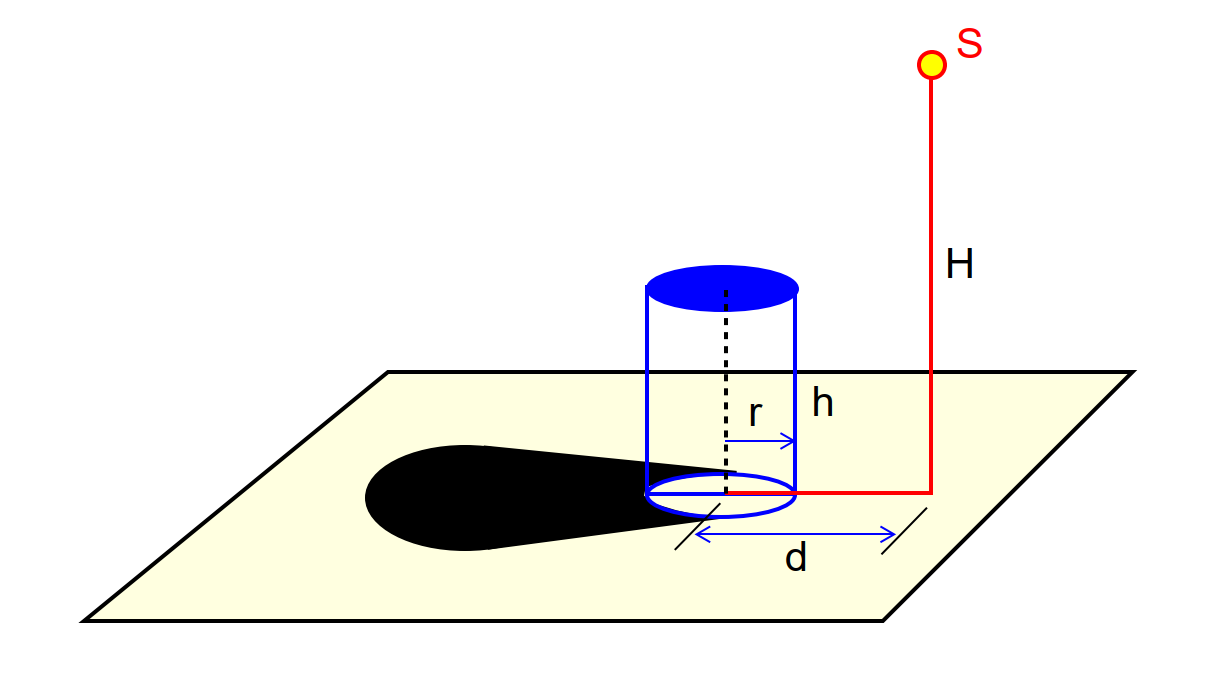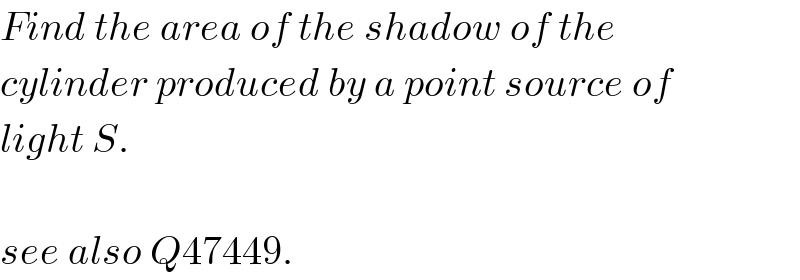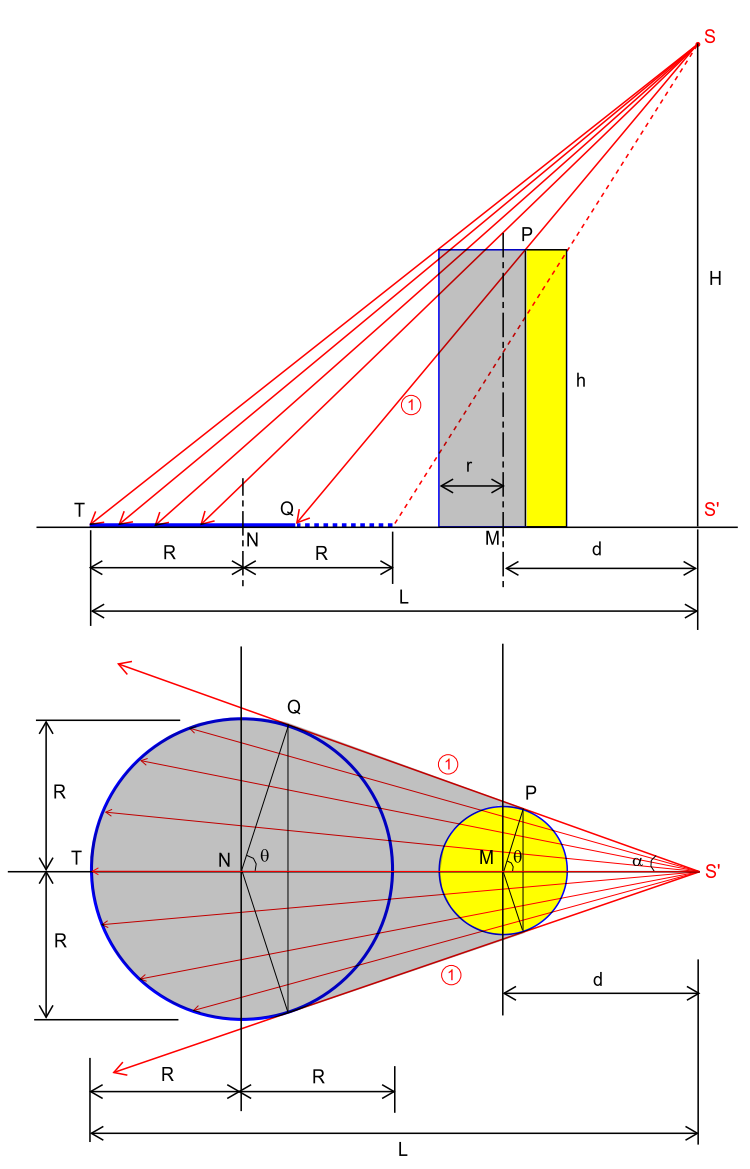
Question and Answers Forum
Question Number 47497 by MrW3 last updated on 10/Nov/18

Commented by MrW3 last updated on 10/Nov/18

Answered by mr W last updated on 12/Nov/18

Commented by mr W last updated on 12/Nov/18
![If the side wall of the cylinder were transparent, we would only see the shadow of cylinder′s top. Since the top is a circle, it can be easily seen, that its shadow has also the shape of a circle. (L/(d+r))=(H/(H−h)) ⇒L=((H(d+r))/(H−h)) ((2e)/(2r))=(H/(H−h)) ⇒e=((Hr)/(H−h))=b cos θ=(r/d) ⇒θ=cos^(−1) (r/d) A_(shadow) =e(L−e) sin θ+πe^2 −θe^2 −πr^2 A_(shadow) =((Hr)/(H−h))[((H(d+r))/(H−h))−((Hr)/(H−h))]sin θ+(π−cos^(−1) (r/d))((H^2 r^2 )/((H−h)^2 ))−πr^2 ⇒A_(shadow) =((H^2 r)/((H−h)^2 ))[(√(d^2 −r^2 ))+r(π−cos^(−1) (r/d))]−πr^2](Q47660.png)
Commented by ajfour last updated on 14/Nov/18

